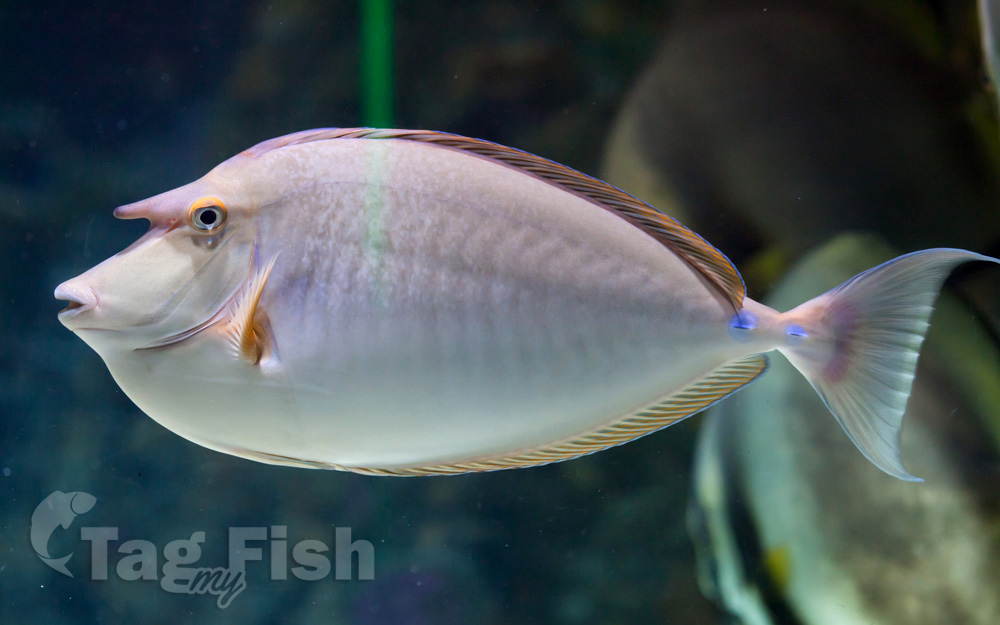Bluespine unicornfish
(Naso unicornis)

Classification
General data
The bluespine unicornfish or short-nose unicornfish (Naso unicornis) is a tang from the Indo-Pacific. It occasionally makes its way into the aquarium trade. It grows to a size of 70 cm in length. It is called kala (meaning thorn) in Hawaii, and dawa in New Caledonia.
Description
The bluespine unicornfish has a blueish-gray body with two blue spines on each side at the base of the tail and a short rostrum or bony horn on the forehead. In small fish the horn is missing and males additionally have tail streamers. These fish have a leather like skin instead of scales. The Bluespine Unicorn fish can grow up to 27 inches with the largest one caught to be 12.7 lbs.
Distribution
The bluespine unicornfish is very common in the tropical Indo-Pacific region usually occurring at temperatures between 77 and 85 F.
Habitat
The bluespine unicornfish are a nearshore fish. The juvenile tend to stay close to shore while the adults tend to live from shallow to the beginnings of the deepwater staying within the upper 40 feet. They tend to enjoy spots with waves or strong surges. The bluespine unicornfish live often solitary on coral reefs or can be found in small schools of unicornfish or as a part of larger schools with many other fish species.











